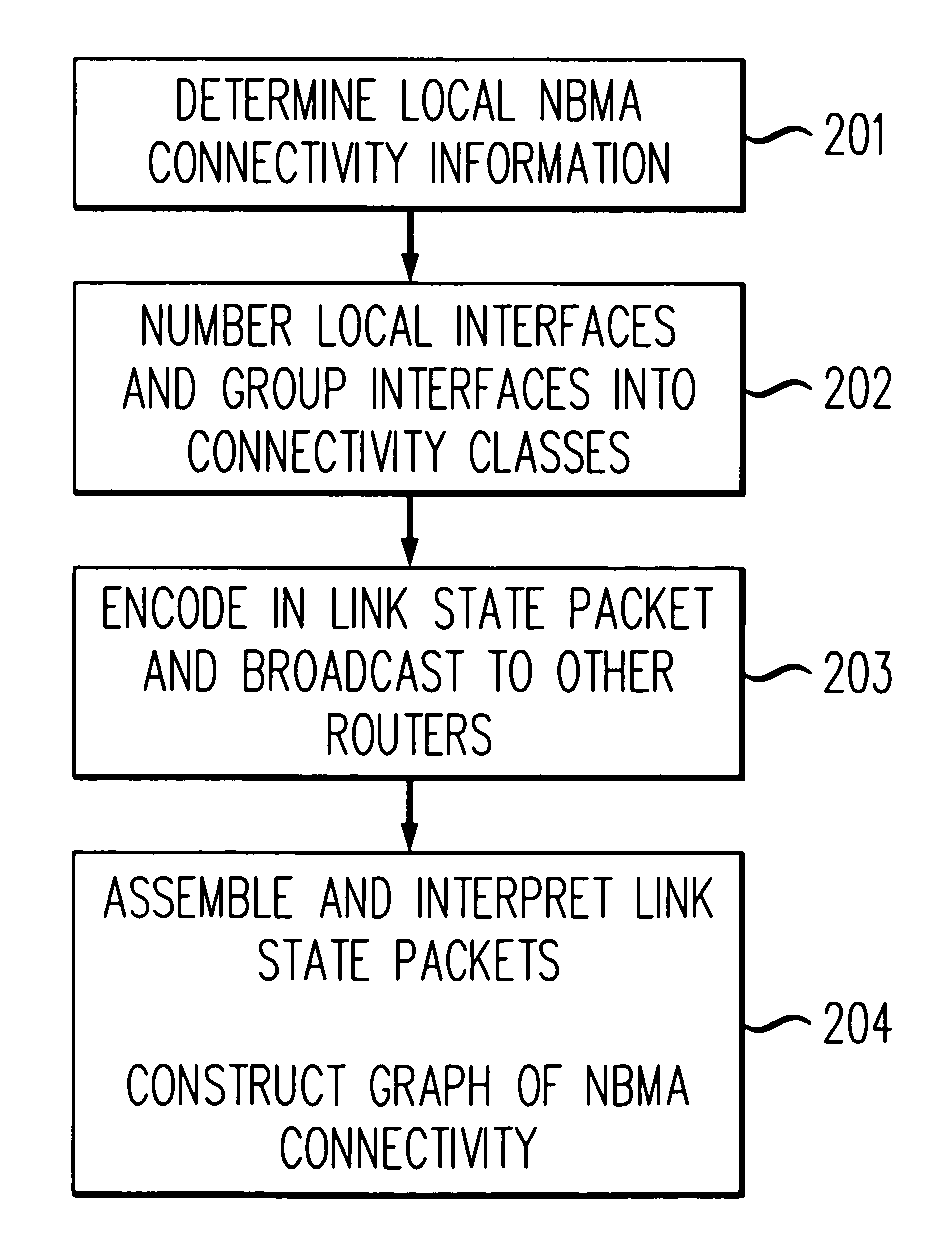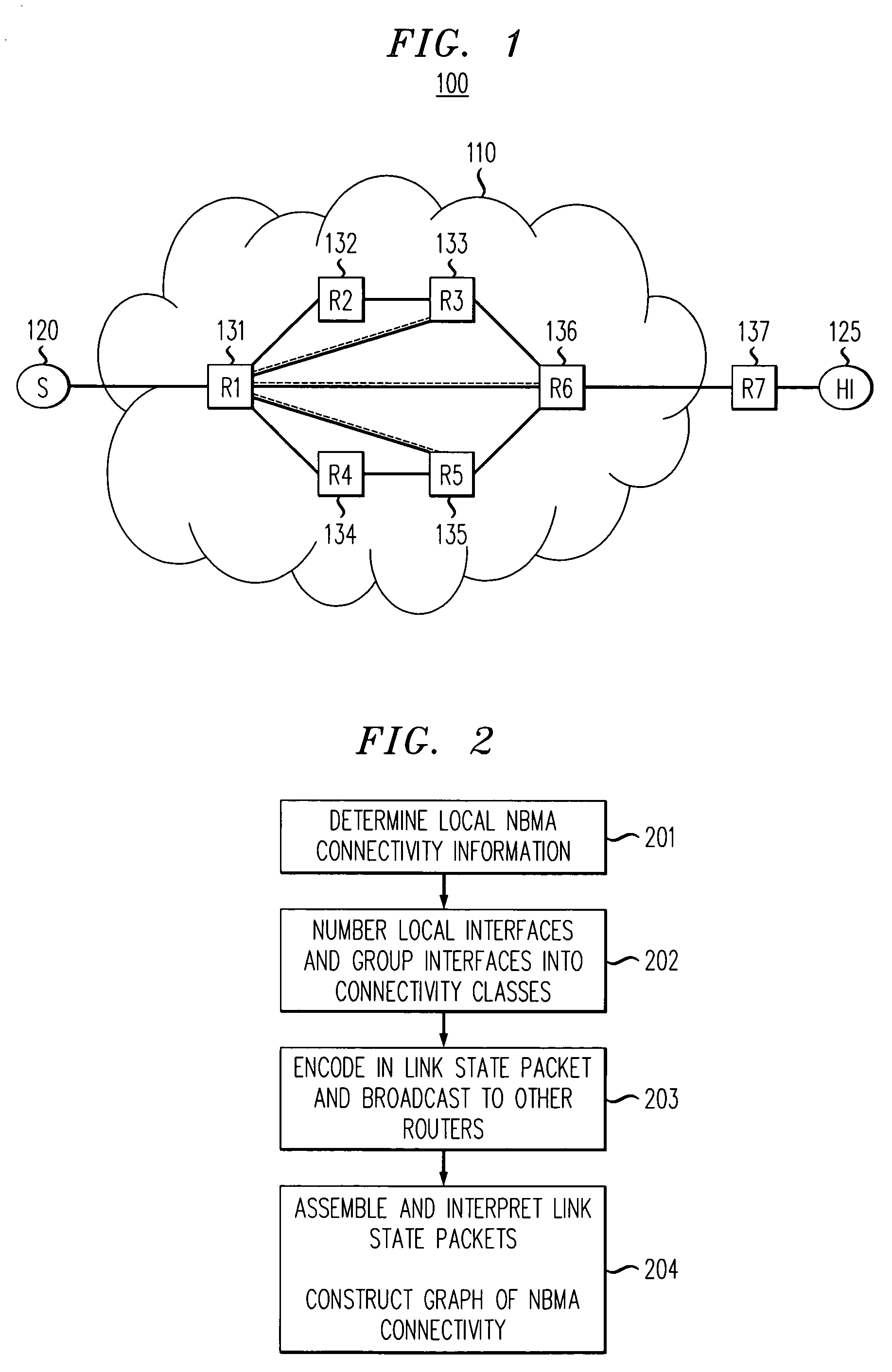Method for determining non-broadcast multiple access (NBMA) connectivity for routers having multiple local NBMA interfaces
a router and multiple access technology, applied in the field of routers with multiple local nbma interfaces, can solve the problems of potential bottlenecks, unreasonably large routing overhead, and complicated incentives to operate ip over atm backbones, and achieve the effects of avoiding overhead, introducing latency, and facilitating migration
- Summary
- Abstract
- Description
- Claims
- Application Information
AI Technical Summary
Benefits of technology
Problems solved by technology
Method used
Image
Examples
Embodiment Construction
[0030]With reference to FIG. 1, a diagram of a communication network 100 is shown illustrating an embodiment of the present invention. The network 100 has multiple routers 131-137, some of which are coupled to a connection-oriented non-broadcast multiple access (NBMA) network 110. For illustration purposes only, network 110 is assumed to be an ATM network, although those of skill in the art will easily recognize that the present invention has application to other connection-oriented networks. It is assumed that it is more efficient to traverse many hops of the routed 150 network by a single NBMA virtual circuit (shortcut). It is also assumed that the virtual circuits are in sufficiently short supply as to preclude interconnecting the routers in a single mesh topology, and that the overhead of setting up and tearing down virtual circuits is too costly for the connection-oriented network to directly emulate a connectionless network.
[0031]In FIG. 1, a source 120 is connected to a route...
PUM
 Login to View More
Login to View More Abstract
Description
Claims
Application Information
 Login to View More
Login to View More - R&D
- Intellectual Property
- Life Sciences
- Materials
- Tech Scout
- Unparalleled Data Quality
- Higher Quality Content
- 60% Fewer Hallucinations
Browse by: Latest US Patents, China's latest patents, Technical Efficacy Thesaurus, Application Domain, Technology Topic, Popular Technical Reports.
© 2025 PatSnap. All rights reserved.Legal|Privacy policy|Modern Slavery Act Transparency Statement|Sitemap|About US| Contact US: help@patsnap.com



